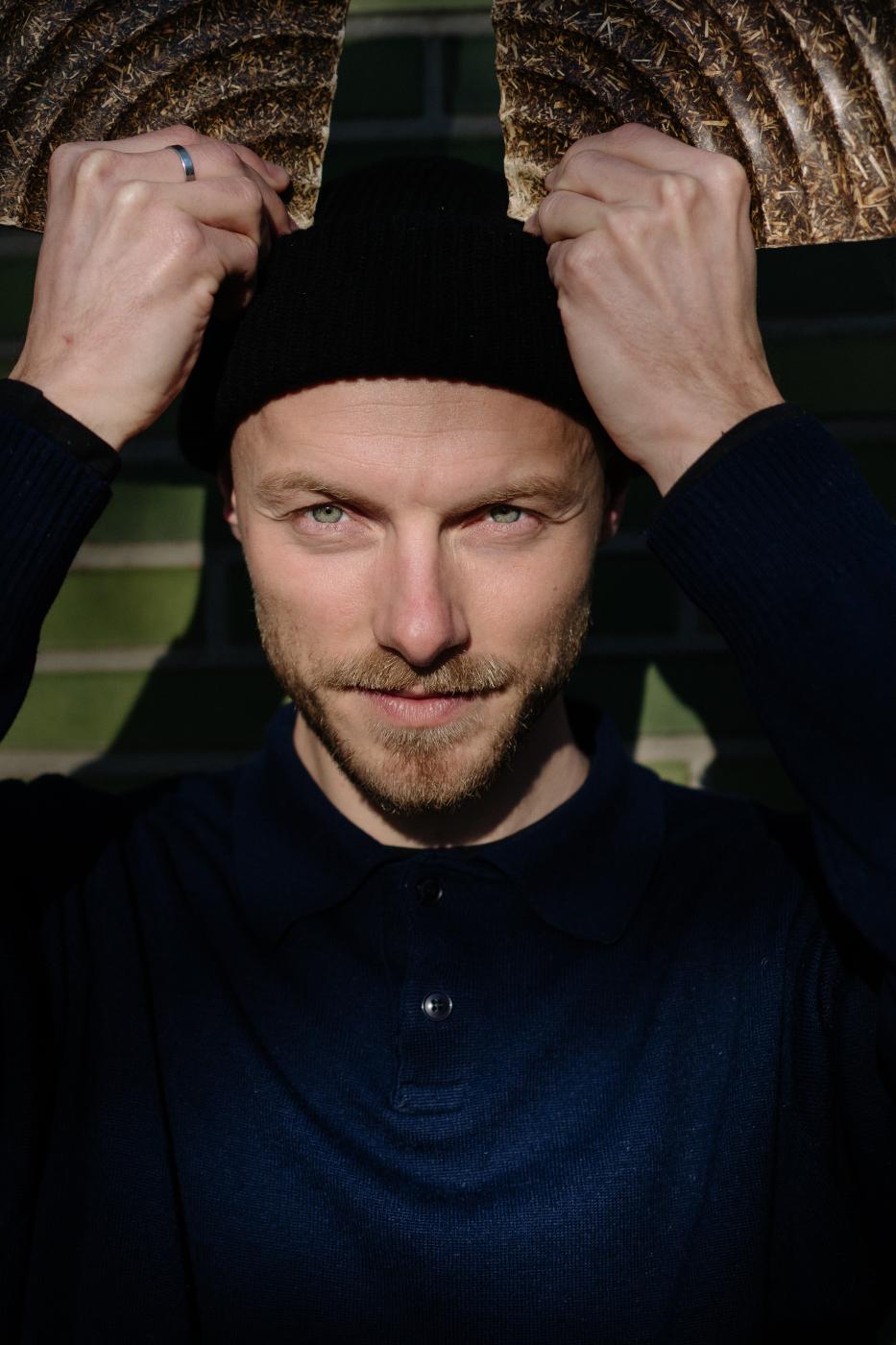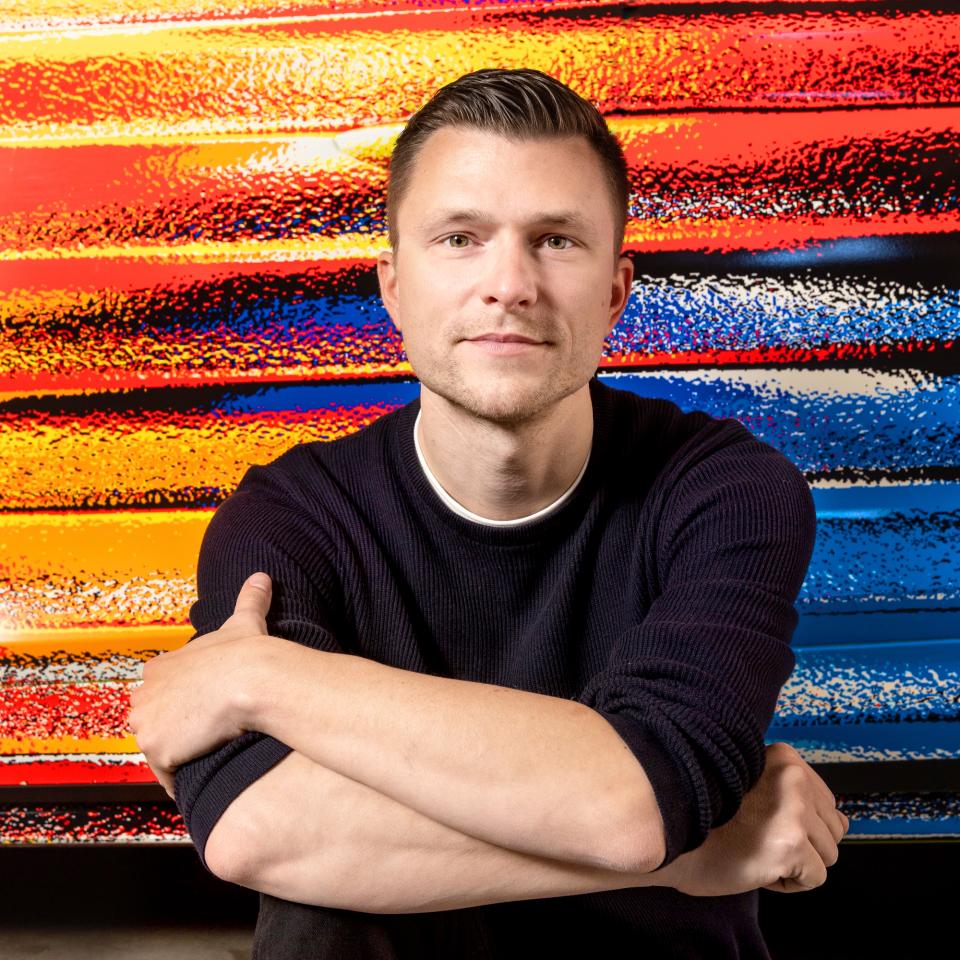The Belgian design scene is vast and diverse. Belgian institutions are always at the forefront of supporting the people, new projects and products that make our country dynamic and unique.
Sep Verboom / Livable - The object becomes
What is green Waste?
Most of the time we call 'waste' what we can’t use anymore, and green waste mainly ends up as compost. But in fact, green waste has a lot more potential, it has fibres, it has juices and there are a lot more applications than just composting. And of course, even if you use the fibres to make a new material, like Circular Matters is doing, at the end of the lifecycle you still have the option of composting. I definitely don't think that waste is the right word to describe it: it's green streams, it's a green resource. It really depends on how you look at it. By working together with Pro Natura, the different partners can reach that potential. And that's why this project has come so far. Because they believe in it and they see the future in it. It’s partly economic and partly because new kinds of jobs are sprouting just by processing these green resources.
Could you talk about how you started your design practice?
I was always curious about the world out there. I did my final degree in the Philippines and for me that was, as a naive student, like a new world was opening up. Not seeing the world from a Western perspective but from a totally different one. And then I was starting to reflect on my education as a designer, as an industrial product designer. Seeing all the effects of a product: what comes with it, the social aspects, but also the environmental aspects, and the economic reality.
Now, nine years later, I think it has been a continuation of my education. But instead of being at school, I was just doing it the practical way, in the field. Working with different partners, with companies, with galleries, with local governments, and with NGOs. As long as it was a new experience or a new collaboration, it was interesting because, in the end, I've learned how they work, how they look at the world. I really believe that's a way of putting the experience forward and combining strengths. I never did anything on my own in the projects. There was always a big team, even imaginary. There are always a lot of people involved. So, I want to continue to spread and share ideas. And I guess a lot of people, designers or even industries, are more and more aware of this. They have to open up and work together.
Can you predict where you will be with your studio in 10 years?
In a way, I think there might be a point where it will be useless to continue my work. My vision is that we have to find a new balance between different things in the way we work: the economic, the social and the environmental sides. And in ten years, if that balance is achieved, I would be quite okay if there is an end date, where I have the feeling that we've come a long way so far and that there's not much work needed anymore. If we follow the system where we live, it's like we have to grow, and get bigger, and bigger again. So, I think if we want to counter this, we also have to counter this in our practice or our work. We have to accept, at one point, that there could be a date when you don't need to keep on searching for more. At one point, you’ll find a balance and you don't need to keep on growing. When you find this balance, this could also mean that you can search for another challenge or do something else.
You always say 'they' or 'we'. In your practice, it seems that between your partners and you, as a designer, there is no hierarchy, it's a shared responsibility…
That's been the case since day one. There's always a collaboration, there are always different people involved and that's also what we try to communicate and be transparent about. And that's also a way people will see more value in things. Because when you think about an object, and you only know who's the designer, then what is that essence or what does that mean? But if you know that the object has been made by those people in that way, and with those materials, coming from that process, that's much more interesting. If people know what it means to make or to come to a final object, then they will have a better understanding and will value their surroundings and the things they buy or use more. The idea behind Livable is a platform that continues to evolve, even without me as a leader. At one point there will be other people taking over, other energies, other perspectives. I'm hoping that if we push through and give more alternatives on what a designer could be, then other people will pick it up and then they will continue and keep working on it because it's never going to be finished. I think Livable is there to continue on its own one day, without one designer being present or being visible.
Could you talk about the connections that you create? For instance, with Pro Natura and Circular Matters?
Every collaboration, even now with ONTketen, starts with the essence: who are the people involved and what do they do? There's always a common interest, but it's not always visible. Whether it's a junk shop owner in the Philippines or a high-end gallerist in Sao Paulo, there's always a link somewhere or the same vision. That's why it's interesting to be in the position of a designer: you can stay in the background, you can observe, and you can facilitate and try to connect these aspirations and let them see things. Because mostly, there are common interests, but people don't see how this can be materialized. So, the job of a designer comes in. You can visualize things, you can relate, you can show or you can talk about other examples or practices. That's what we did in this project as well. On one side, you have the social workers of Pro Natura and you have the workers of Circular Matters, who are more the tech people or the cool nerds, I would say. You start by just getting to know them. I know Peter. I know how he thinks or thinks differently. He has several ideas and perspectives on things. Same for Pro Natura: they also have a vision, where to go with their company, where to go with their green resources. So, I think the first step or the biggest job is to understand the mutual goals and then try to visualize how the mutual goals strengthen each other. In this case, in the ONTketen project, each of the participants has their own strengths. But we are all in the same project for a mutual goal: to use the green streams, to re-evaluate and to make people aware that we don't need to search far away to find an alternative to synthetic materials and products. It's very close to us. We've just forgotten it because it's been there for so long.
ONTketen's final goal is not to create functional objects. What is its function? You don't care what will be done with this material?
I think the function can change from project to project. ONTketen’s function is materializing or showing the possibilities. We show them to designers and companies, so they can materialize them. We show it's possible. The partners are there, the resources are there, the knowledge is there. That's our function. But we don't define how it's materialized. We show it's possible to get materials, resources, technology close by without objectifying it because it could be anything, a tile, a chair, a stand. I think that's much stronger.
If the final result is a possibility, a connection, a collaboration between different partners, then you show the potential this material might have. Now we’re developing the next step: we’re inviting external designers, companies, to materialize it.
ONTketen, from the very beginning, is about putting partners together, finding mutual goals. How are we going to present it? How are we going to document it? How are we going to work with companies? How are we going to convince them? How are we going to approach designers? And that's my job at the moment. But at one point I would like to switch to something else as well.












